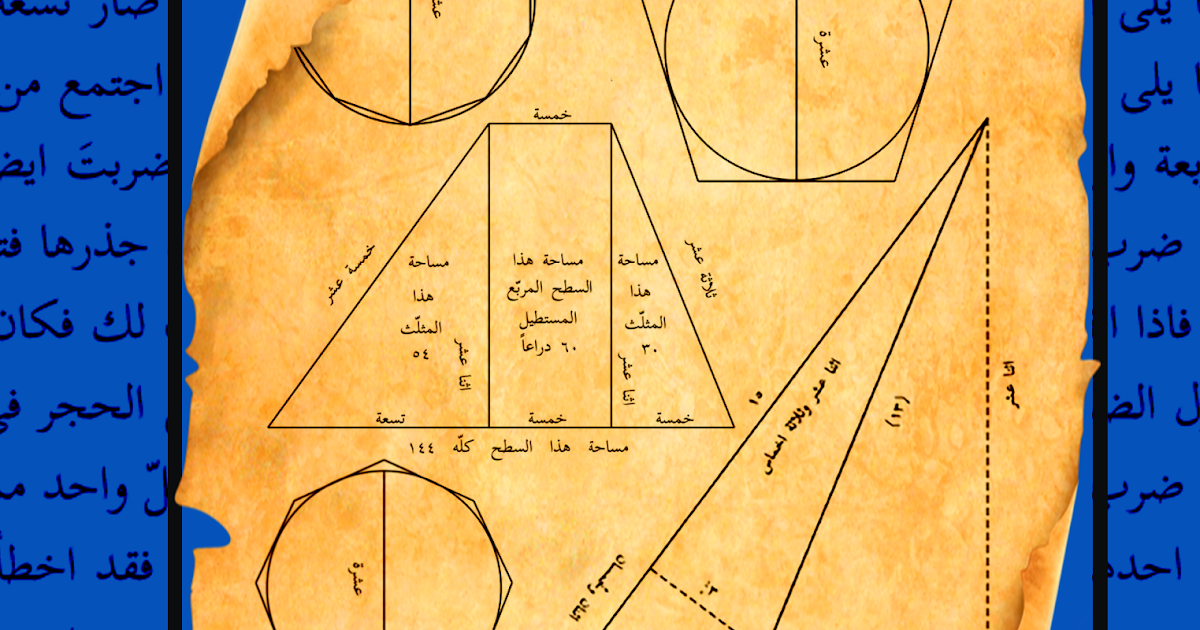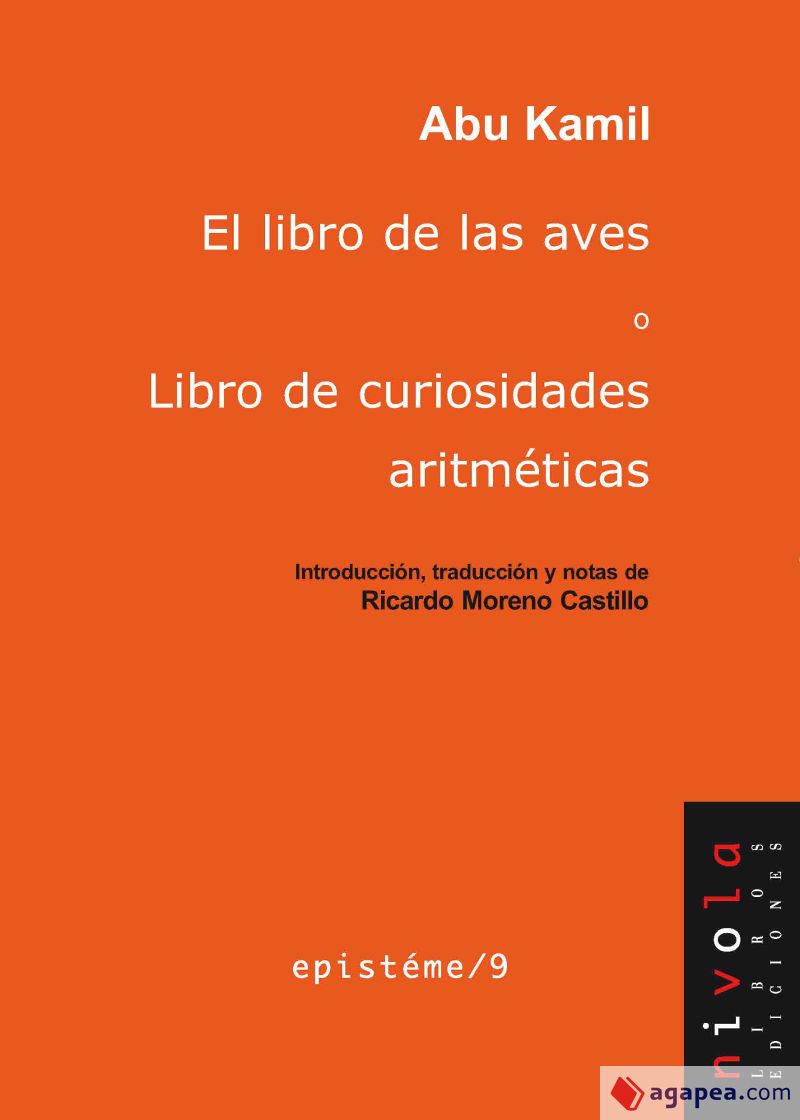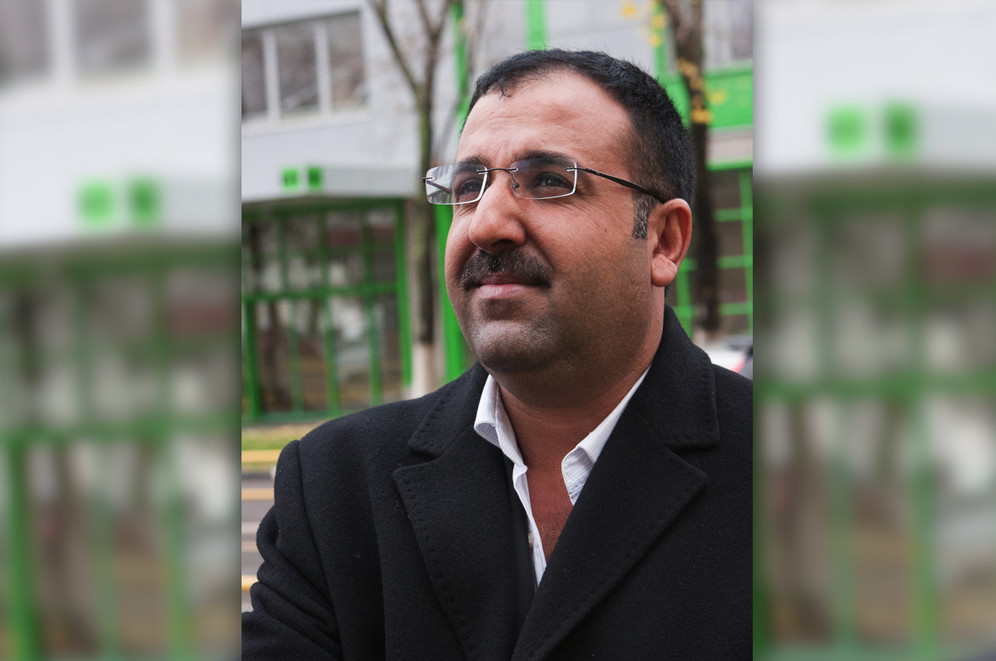
Matematika Geometri Abu Kamil dalam Kitab alMisaha wa alHandasa (Mada
Abū Kāmil Shujāʿ ibn Aslam was an Arabic mathematician who lived in Egypt during the Islamic Golden Age. He was one of Islam's greatest algebraists in the period following the earliest Muslim algebraist, al-Khwarizml (f. ca. 825).

Top 10 Arab Mathematicians
Abu Kamil Abū Kāmil Shujāʿ ibn Aslam ibn Muḥammad Ibn Shujāʿ ( Latinized as Auoquamel, [1] Arabic: أبو كامل شجاع بن أسلم بن محمد بن شجاع, also known as Al-ḥāsib al-miṣrī —lit. "The Egyptian Calculator") (c. 850 - c. 930) was a prominent Egyptian mathematician during the Islamic Golden Age.

Lebih Mengenal Karya Ilmuwan Muslim Terbesar Al Khawarizmi (1
Abū Kāmil, Shujāʿ ibn Aslam ibn Muḥammad Ibn Shujāʿ (Latinized as Auoquamel, [1] Arabic: أبو كامل شجاع بن أسلم بن محمد بن شجاع, also known as al-ḥāsib al-miṣrī —lit. "the Egyptian reckoner") (c. 850 - c. 930) was an Egyptian mathematician during the Islamic Golden Age.

Die Algebra. (Kitab AlGabr WalMuqabala). by Ibn Aslam, Abu Kamil Soga
Abu Kamil Shuja' ibn Aslam (850--930) was a prominent Egyptian Muslim mathematician of the Islamic Golden age (generally considered the 8th to the 13th or 14th centuries). He was also known as al-Hasib al-Misri, the Egyptian Calculator (or Reckoner). His full name was Abu Kamil Shujaʿ ibn Aslam ibn Muhammad ibn Shuja.

Ghazi « Abu Shuja Abu Waqar « Novels « Reading Section
Abu Kamil Shuja was an Islamic mathematician. He was one of Al-Khwarismi's successors and applied algebraic methods to geometric problems. Biography Abu Kamil Shuja is sometimes known as al-Hasib al-Misri, meaning the calculator from Egypt.

Matematika Geometri Abu Kamil dalam Kitab alMisaha wa alHandasa (Mada
Shuja, or Shudja, also known as al-Hasib al-Misri, or Abu Kamil Shuja'ibn Aslam ibn Muhammad ibn Shujac. 850-c. 930 He is remembered for his work in the field of algebra, but virtually nothing is known of his life. He added practical elements to mathematics; for example, he used algebraic equations to solve problems of inheritance.

Al Jwarismi matemático árabe
found: Dictionary of African Biography, accessed October 16, 2014, via Oxford African American Studies Center database: (Abu, Kamil Shuja; al-Hasib al-Misri, the Egyptian Calculator; Abu Kamil Shuja' ibn Aslam ibn Muhammad ibn Shuja; mathematician; born 850; a direct successor in the development of algebra to al-Khwarizmi; he is known primarily for his works in algebraic and numerical theories.

29. ABUKAMIL IBNASLAM SHUJA SAPAVIVA
Abū Kāmil, Shujāʿ ibn Aslam ibn Muḥammad Ibn Shujāʿ (Latinized as Auoquamel,[1] Arabic: ابو كامل, also known as al-ḥāsib al-miṣrī—lit. "the Egyptian calculator") (c. 850 - c. 930) was an Egyptian Muslim mathematician during the Islamic Golden Age.. His mathematical techniques were later adopted by Fibonacci, thus.

Abu Kamil Map and Timeline
February 2, 2023 by Muslims scientists Abu Kamil Shuja ibn Aslam was a prominent 9th-century Arab mathematician, astronomer, and engineer. Born around 850 CE in Egypt, he made significant contributions to various fields, leaving a lasting impact on the world of mathematics and science.

Abu Kamil Shuja World of Science أبو كامل شجاع سائنس کی دنیا YouTube
Abū Kāmil Shujāʿ ibn Aslam ibn Muḥammad Ibn Shujāʿ was a prominent Egyptian mathematician during the Islamic Golden Age. He is considered the first mathematician to systematically use and accept irrational numbers as solutions and coefficients to equations. His mathematical techniques were later adopted by Fibonacci, thus allowing Abu Kamil an important part in introducing algebra to.

8. MUHAMMAD IBN MUSA ALKHWARIZMI SAPAVIVA
His full name was Abu Kamil Shujaʿ ibn Aslam ibn Muhammad ibn Shuja. Very few biographical details are known concerning Abu Kamil, but his productive peak appears to have been at the end of the ninth century.

[علي بن عيسى الكحال] مركز المعرفة الرقمي
A half century after al-Khwarizmi, Abu Kamil Shuja ibn Aslam (c. 850-c. 930), an Islamic mathematician from Egypt, applied complex algebra to geometric problems, solving three non-linear equations for three different variables. He also presented equations on various ways to divide a line of length 10 and to inscribe a pentagon within a square.

Abu Shuja "Rädda människor är viktigare"
Abū Kāmil Shujāʿ b. Aslam al-Miṣrī (765 words) Abū Kāmil Shujāʿ b. Aslam al-Miṣrī (sometimes called "al-Ḥāsib al-Miṣrī") was a prominent mathematician who wrote a treatise on algebra following the pioneering studies of al-Khwārazmī (d. c.235/850), whose work he quotes.

The first words of Allah to Adam YouTube
Abū Kāmil Shujāʿ ibn Aslam ibn Muḥammad Ibn Shujāʿ (Latinized as Auoquamel, Arabic: أبو كامل شجاع بن أسلم بن محمد بن شجاع, also known as Al-ḥāsib al-miṣrī—lit. "The Egyptian Calculator") (c. 850 - c. Read more on Wikipedia. Since 2007, the English Wikipedia page of Abū Kāmil Shujāʿ ibn Aslam.

EL LIBRO DE LAS AVES O LIBRO DE CURIOSIDADES ARITMETICAS ABU KAMIL
Abu Kamil, ibn Aslam Shuja History / Early-middle-ages / Person: Abu Kamil, ibn Aslam Shuja Person: Abu Kamil, ibn Aslam Shuja Abu Kamil Shuja was an Islamic mathematician. He was one of Al-Khwarismi's successors and applied algebraic methods to geometric problems. Mathematical Profile (Excerpt):

Interview with Abu Shuja, the man who rescues ISIS captives — RTD
BY ABU KAMIL SHUJA' IBN ASLAM (850-930) By Mohammad Yadegari* The discovery of mathematical induction as a formal proof has been credited to Blaise Pascal (1623-1662), although many historians of mathematics have attributed this discovery to others.